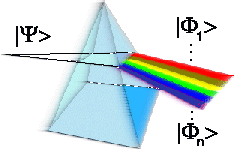Magdalena A. Zauska-Kotur and Zbigniew W. Gortel
A recently developed approach to microscopic kinetics of an interacting lattice gas is applied to derive an algebraic expression for the coverage dependence of the collective diffusion coefficient in a two-dimensional (2D) adsorbate populating a square lattice of adsorption sites with strong adatom-adatom repulsive nearest-neighbor interactions. Results are valid below the critical temperature for coverages at which the adsorbate is structurally ordered. Interactions between nonactivated particles as well as those between the activated one and its nonactivated neighbors are accounted for. The starting point is Markovian master equations for the kinetics of microscopic states of the system, controlled by jumps of adatoms between adsorption sites. The diffusion coefficient is extracted in the long wavelength and the thermodynamic limits from the diffusive eigenvalue of a microscopic rate matrix associated with the equations. The eigenvalue is evaluated using an Anzatz for the left and the right eigenvectors of the matrix with the adsorbate ordering inscribed into their structure. The results are validated by Monte Carlo simulations of the diffusion process.
Phys. Rev. B 72, 235425 (2005)
Oct 24, 2005
Oct 4, 2005
Collective diffusion in a interacting one-dimensional lattice gas: Arbitrary interactions, activation energy, and nonequilibrium diffusion
Łukasz Badowski and Magdalena A. Załuska-Kotur
Collective diffusion is investigated within the kinetic lattice gas model for a system of interacting particles in one dimension. Analytic relations between the collective diffusion coefficient, diffusion activation energy, the attempt frequency pre-exponential factor, vs the particle density for both attractive and repulsive particle-particle interactions of an arbitrary strength are derived using the recently proposed [Phys. Rev. B 70, 125431 (2004)] variational method. The analytic results agree with results of Monte Carlo simulations within a broad range of temperatures. At low coverages for strongly repulsive interactions the activation energy is roughly equal to its value for the noninteracting system but around =0.5 it decreases rapidly by more than strictly accounted for by adparticle-adparticle interactions. Only at significantly higher coverages it increases reaching the expected limiting value. Peaks in the coverage dependence of the effective attempt frequency (for both the repulsive and the attractive interactions) are interpreted to reflect peaks in the total number of microscopic configurations accessible to the system at a given coverage and temperature. It is argued that the method used in this work allows for making meaningful estimates of the diffusion coefficient for systems far from thermal equilibrium.
Phys. Rev. B 72, 245413 (2005)
Collective diffusion is investigated within the kinetic lattice gas model for a system of interacting particles in one dimension. Analytic relations between the collective diffusion coefficient, diffusion activation energy, the attempt frequency pre-exponential factor, vs the particle density for both attractive and repulsive particle-particle interactions of an arbitrary strength are derived using the recently proposed [Phys. Rev. B 70, 125431 (2004)] variational method. The analytic results agree with results of Monte Carlo simulations within a broad range of temperatures. At low coverages for strongly repulsive interactions the activation energy is roughly equal to its value for the noninteracting system but around =0.5 it decreases rapidly by more than strictly accounted for by adparticle-adparticle interactions. Only at significantly higher coverages it increases reaching the expected limiting value. Peaks in the coverage dependence of the effective attempt frequency (for both the repulsive and the attractive interactions) are interpreted to reflect peaks in the total number of microscopic configurations accessible to the system at a given coverage and temperature. It is argued that the method used in this work allows for making meaningful estimates of the diffusion coefficient for systems far from thermal equilibrium.
Phys. Rev. B 72, 245413 (2005)
Subscribe to:
Comments (Atom)
